America’s most visited national parks offer a diverse range of experiences, from breathtaking vistas to thrilling adventures. Planning a trip to these popular destinations requires some forethought to make the most of your visit and avoid potential crowds. This comprehensive guide provides essential information for each of the top 10, helping you craft the perfect national park getaway.
Your Guide to the Top 10 Most Visited National Parks:
1. Great Smoky Mountains National Park
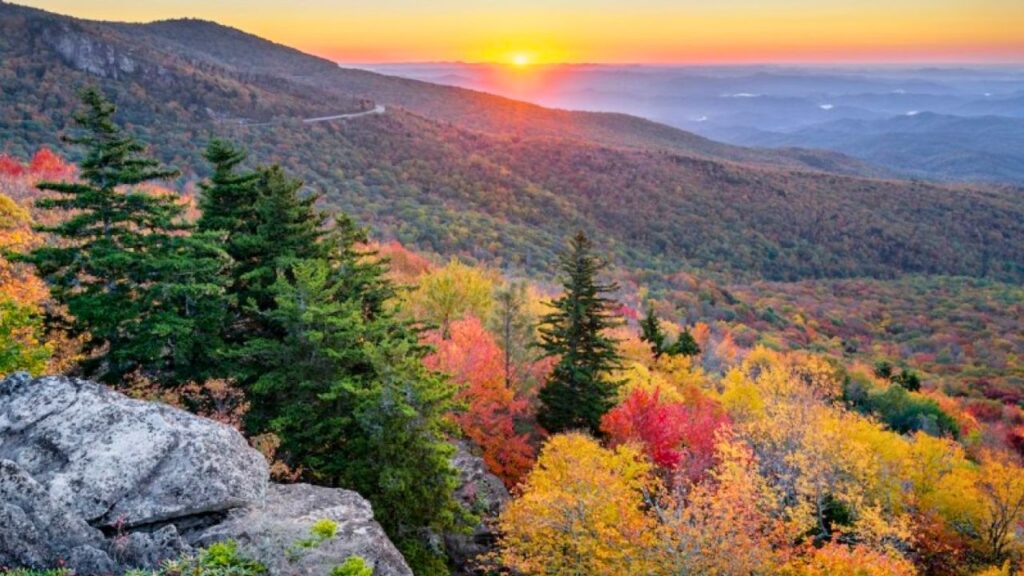
Visitors to the Great Smoky Mountains should be aware that weather conditions can change rapidly. Additionally, the park is home to a significant black bear population, and caution should be exercised, maintaining a safe distance from all wildlife.
- Best Time to Visit: Spring (wildflowers), Summer (lush greenery), and Fall (spectacular foliage). Be prepared for crowds, especially in October.
- Things to Do:
- Drive the scenic Cades Cove Loop Road: Explore historic buildings and spot wildlife like black bears and deer.
- Hike a section of the Appalachian Trail: Experience a small part of this iconic long-distance trail.
- Climb to the observation tower at Clingmans Dome: Enjoy panoramic 360-degree views from the highest point in the park.
- Discover the beauty of waterfalls: Hike to popular falls like Laurel Falls or Grotto Falls.
- Explore the historic Mountain Farm Museum: Step back in time and see how early settlers lived.
- Planning Tips: No entrance fee, but parking tags are required. Book accommodations in nearby towns like Gatlinburg or Pigeon Forge well in advance. Check weather forecasts as conditions can change rapidly in the mountains.
- What to Bring: Layers of clothing, rain gear, sturdy hiking shoes, binoculars for wildlife viewing, and a map.
- Accommodation: Options range from hotels and cabins in surrounding towns to campgrounds within the park (reservations highly recommended).
2. Grand Canyon National Park
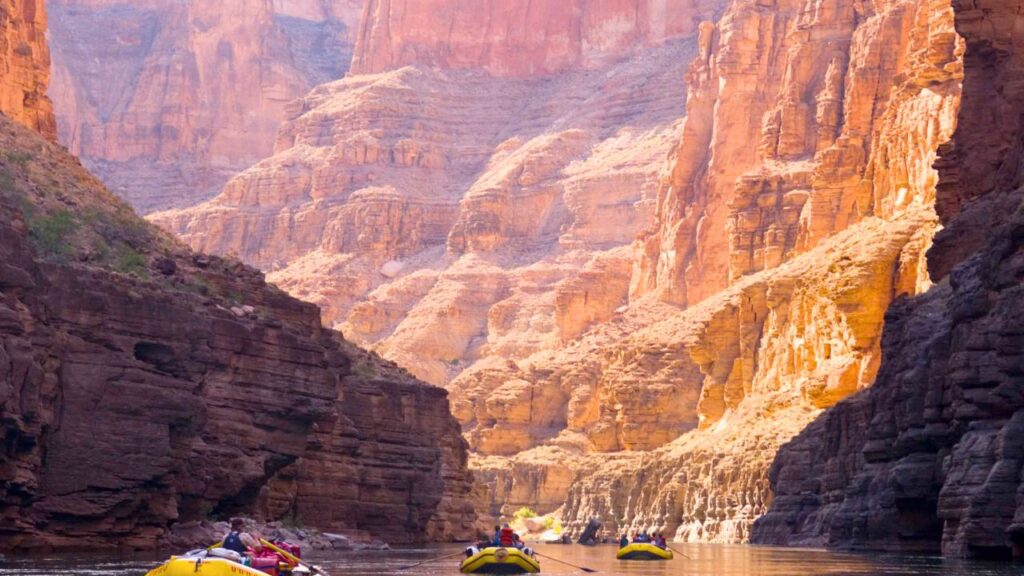
It is important for visitors to the Grand Canyon to recognize the extreme nature of the desert environment. Temperatures, especially within the canyon, can be very high, and the air is notably dry. Adequate hydration is crucial, even for short periods spent along the rim.
- Best Time to Visit: Spring and Fall offer pleasant temperatures and fewer crowds than Summer. Summer can be very hot, especially in the inner canyon.
- Things to Do:
- Witness the sunrise or sunset from Mather Point: Capture iconic views of the canyon bathed in golden light.
- Hike a portion of the Bright Angel Trail: Descend below the rim for a closer look at the canyon’s layers (be aware of the difficulty).
- Walk the Rim Trail along the South Rim: Enjoy easy access to numerous viewpoints with stunning vistas.
- Take a mule ride into the canyon: Experience a unique way to explore the inner canyon (book well in advance).
- Visit the Desert View Watchtower: Admire the architecture and panoramic views from this historic landmark.
- Planning Tips: Entrance fee required. Book lodging and mule rides well in advance (often months ahead). If hiking below the rim, carry plenty of water and be aware of the risks.
- What to Bring: Wide-brimmed hat, sunscreen, sunglasses, plenty of water, sturdy hiking shoes, and layers of clothing.
- Accommodation: Options include lodges within the South Rim and North Rim (seasonal) and hotels in nearby towns like Tusayan and Williams. Campgrounds are also available (reservations recommended).
3. Yosemite National Park
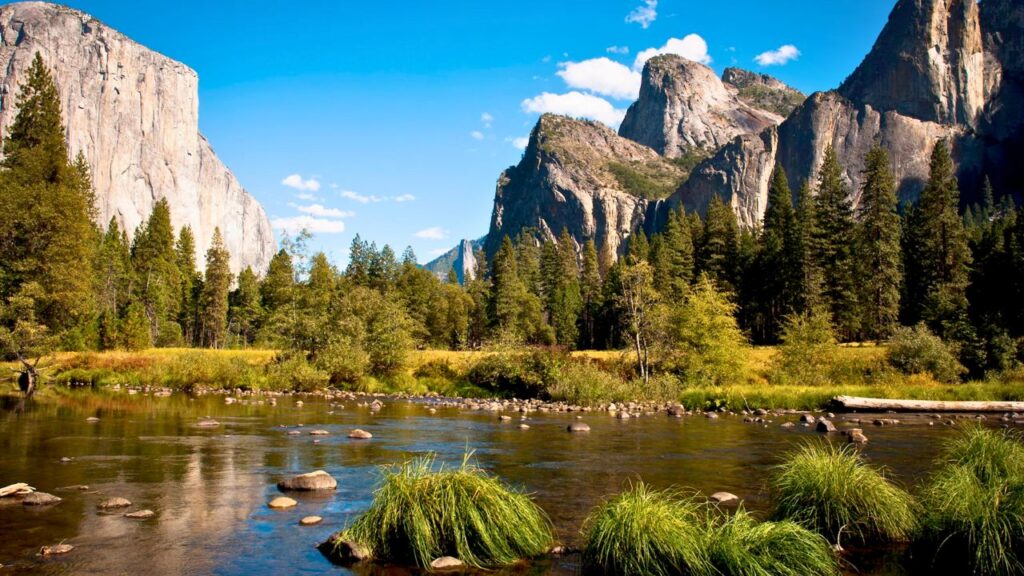
Due to its immense popularity, particularly during peak season, Yosemite National Park often requires reservations for entry. Additionally, visitors should be aware of the active bear population and adhere strictly to food storage regulations to ensure the safety of both people and wildlife.
- Best Time to Visit: Spring (waterfalls are at their peak) and Fall (fewer crowds, beautiful colors). Summer is extremely popular, requiring reservations for entry during peak season.
- Things to Do:
- Gaze upon the iconic granite monoliths El Capitan and Half Dome: Marvel at their sheer size and beauty.
- Hike to the base of Yosemite Falls: Feel the mist from one of the tallest waterfalls in North America.
- Explore the giant sequoias in the Mariposa Grove: Walk among these ancient and massive trees.
- Drive the scenic Tioga Pass Road (seasonal): Enjoy stunning high-country views and access to Tuolumne Meadows.
- Hike to Tunnel View for the classic Yosemite Valley panorama: Capture the iconic vista.
- Planning Tips: Entrance fee required. During peak season (typically mid-May to late October), reservations are required to enter the park. Book lodging and any tours or activities well in advance. Be aware of wildlife, especially bears, and store food properly.
- What to Bring: Sturdy hiking shoes, layers of clothing, insect repellent, bear spray (know how to use it), and a good map.
- Accommodation: Options range from historic lodges and cabins within the valley to hotels and vacation rentals in surrounding towns like El Portal and Groveland. Campgrounds are also available (reservations essential).
4. Rocky Mountain National Park
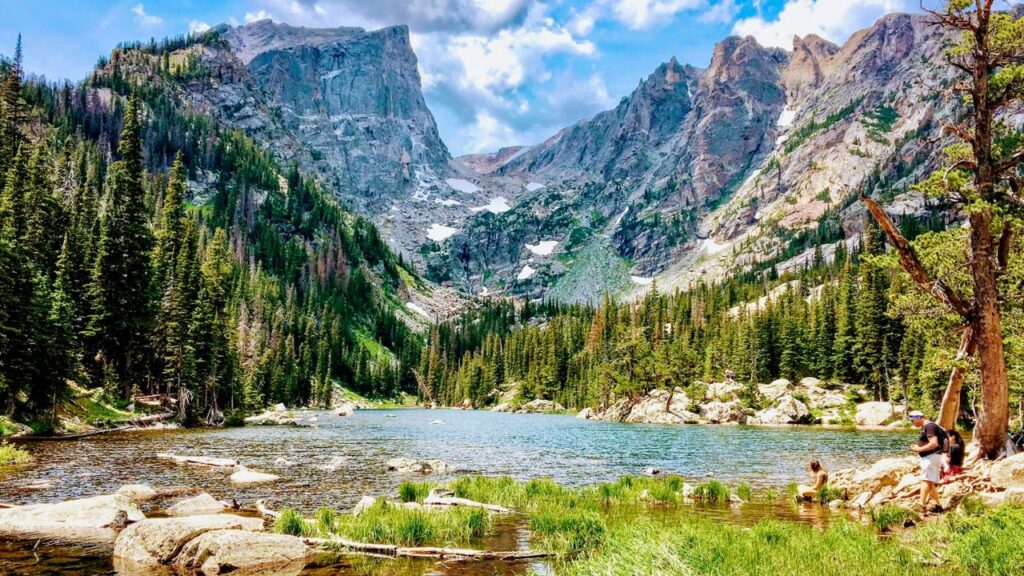
Visitors to Rocky Mountain National Park should be mindful of the high altitudes, which can cause altitude sickness in some individuals. It is advisable to acclimate gradually and stay well-hydrated. Furthermore, weather conditions in the mountains can change rapidly, so preparedness is essential.
- Best Time to Visit: Summer (wildflowers, pleasant temperatures at higher elevations) and Fall (stunning aspen colors). Timed entry permits are often required during the peak season.
- Things to Do:
- Drive the Trail Ridge Road: Traverse the highest continuous paved road in North America with breathtaking alpine views.
- Hike around Bear Lake: Enjoy easy and accessible trails with stunning reflections of the surrounding peaks.
- Explore the Sprague Lake area: Take in the iconic views of Longs Peak reflected in the water.
- Look for elk and other wildlife in Moraine Park: This valley is a prime spot for wildlife viewing, especially during dawn and dusk.
- Hike to a waterfall like Alberta Falls: Enjoy a relatively short and rewarding hike to a beautiful cascade.
- Planning Tips: Entrance fee required. Timed entry permits are often necessary during peak season (check the park website). Be prepared for high altitudes and potential afternoon thunderstorms.
- What to Bring: Layers of clothing (temperatures can vary greatly), rain gear, sturdy hiking shoes, sunscreen, and water.
- Accommodation: Options include lodging in Estes Park and Grand Lake, located near the park entrances, as well as campgrounds within the park (reservations recommended).
5. Zion National Park
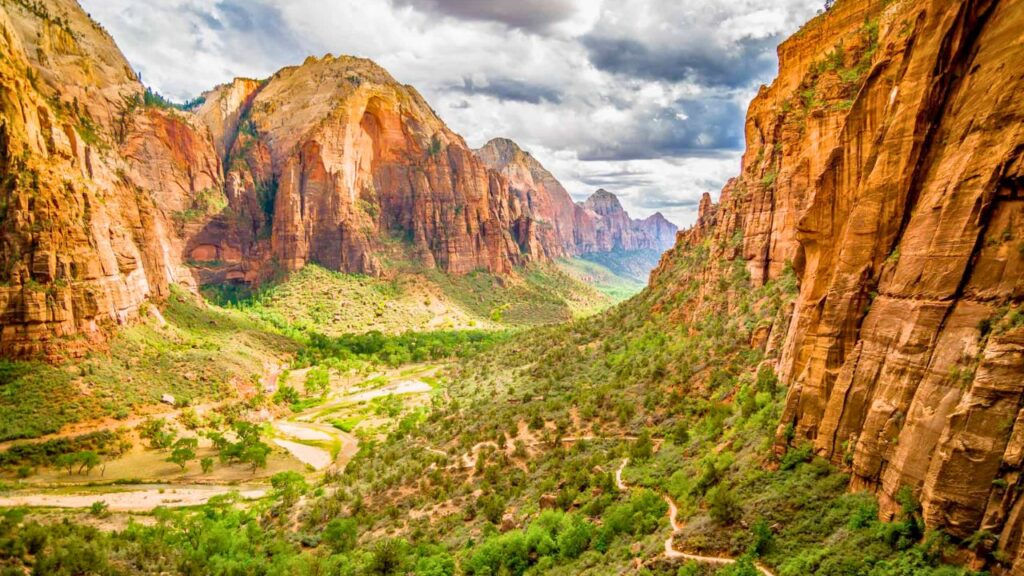
During the busier times of the year, access to the main Zion Canyon is managed via a mandatory shuttle system. Additionally, those planning to hike in the park’s narrow canyons should be aware of the potential risk of flash floods, particularly during periods of heavy rainfall.
- Best Time to Visit: Spring and Fall offer the most comfortable temperatures. Summer can be extremely hot.
- Things to Do:
- Hike The Narrows: Wade or swim through the Virgin River between towering canyon walls (permit often required).
- Brave the heights of Angels Landing (permit required): Experience a thrilling hike with chain-assisted sections and incredible views.
- Explore the scenic Pa’rus Trail: Enjoy an easy, paved trail perfect for walking, biking, and enjoying the Virgin River.
- Take the scenic drive through the Zion-Mount Carmel Tunnel: Marvel at the engineering feat and the unique landscape.
- Hike to the Emerald Pools: Discover a series of waterfalls and hanging gardens.
- Planning Tips: Entrance fee required. A shuttle system operates within Zion Canyon during peak season. Permits are required for Angels Landing. Check water levels and weather forecasts before hiking The Narrows.
- What to Bring: Sturdy hiking shoes (water shoes recommended for The Narrows), sunscreen, a wide-brimmed hat, plenty of water, and layers of clothing.
- Accommodation: Options include the Zion Lodge within the park and numerous hotels and vacation rentals in Springdale, just outside the park’s main entrance. Campgrounds are also available (reservations highly recommended).
6. Yellowstone National Park
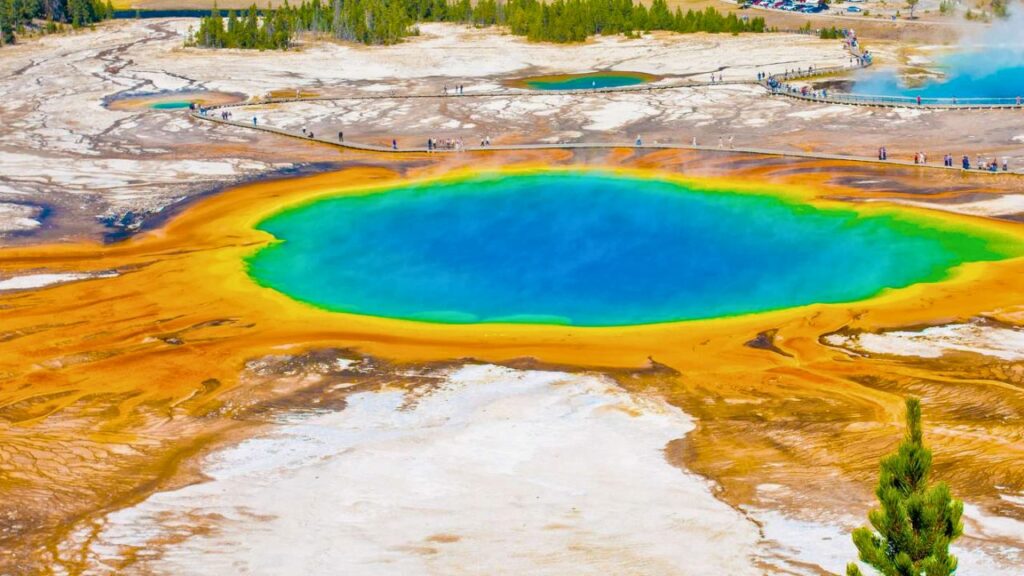
A crucial aspect of visiting Yellowstone National Park is understanding the potential hazards associated with its thermal features. Geysers and hot springs are extremely hot and should never be approached or touched. Furthermore, the park’s wildlife is wild, and maintaining a safe viewing distance is paramount.
- Best Time to Visit: Spring and Fall offer good wildlife viewing opportunities and fewer crowds than Summer. Summer is popular but can be very crowded. Winter offers a unique snowy landscape but with limited access.
- Things to Do:
- Witness the eruption of Old Faithful geyser: Experience this iconic and predictable natural wonder.
- Marvel at the vibrant colors of Grand Prismatic Spring: See the largest hot spring in the United States.
- Explore the Mammoth Hot Springs Terraces: Admire the unique and ever-changing travertine formations.
- Spot wildlife in Lamar Valley: Increase your chances of seeing bison, elk, pronghorn, and possibly wolves or bears.
- Hike along the rim of the Grand Canyon of the Yellowstone: See the powerful waterfalls and colorful canyon walls.
- Planning Tips: Entrance fee required. Book lodging and tours well in advance. Be aware of wildlife and maintain a safe distance. Road closures are common in winter and during spring snowmelt.
- What to Bring: Layers of clothing (temperatures can fluctuate), rain gear, sturdy walking shoes, binoculars for wildlife viewing, and bear spray (know how to use it).
- Accommodation: Options range from historic lodges and cabins within the park to hotels and vacation rentals in gateway towns like West Yellowstone, Gardiner, and Jackson. Campgrounds are also available (reservations essential).
7. Acadia National Park
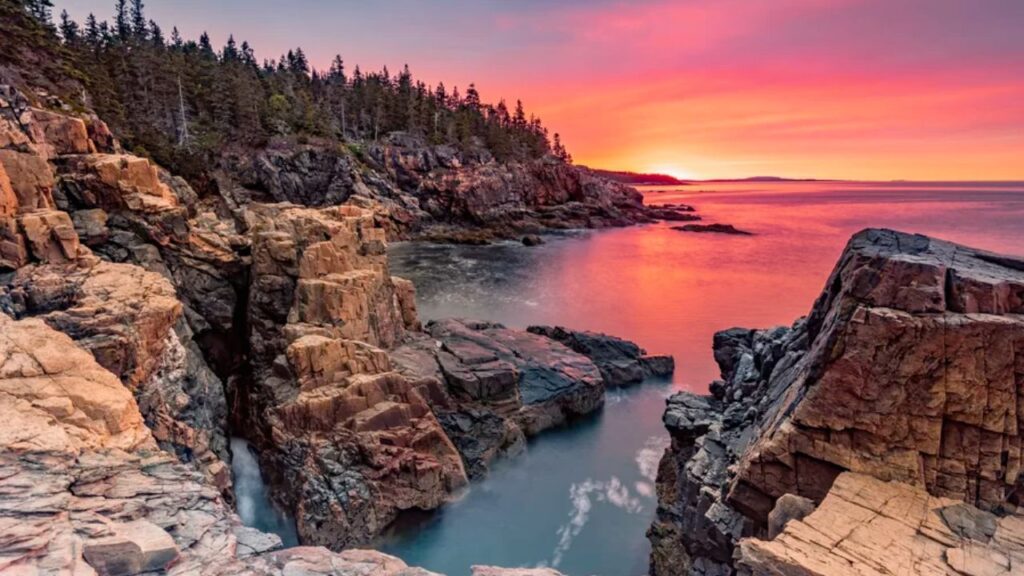
Visitors exploring Acadia National Park’s stunning coastline should exercise caution on the rocky terrain, which can be particularly slippery when wet or covered in fog, a common occurrence. Wearing appropriate, sturdy footwear is highly recommended.
- Best Time to Visit: Summer (pleasant coastal weather) and Fall (spectacular foliage).
- Things to Do:
- Drive to the summit of Cadillac Mountain: Enjoy panoramic views of the coastline and surrounding islands (reservations often required for sunrise).
- Bike or stroll along the historic Carriage Roads: Explore these unique gravel roads built by John D. Rockefeller Jr.
- Hike the Ocean Path Trail: Walk along the dramatic rocky coastline with stunning ocean views.
- Experience the thunderous waves at Thunder Hole: Witness the powerful surge of the ocean.
- Visit the Bass Harbor Head Light: Photograph this iconic Maine lighthouse perched on a rocky cliff.
- Planning Tips: Entrance fee required. Reservations are often needed for driving to the summit of Cadillac Mountain. Be prepared for coastal weather, which can be unpredictable.
- What to Bring: Layers of clothing, rain gear, sturdy walking shoes, and a camera to capture the scenic beauty.
- Accommodation: Options include inns, hotels, and bed and breakfasts in Bar Harbor and other nearby towns on Mount Desert Island, as well as campgrounds within the park (reservations recommended).
8. Grand Teton National Park
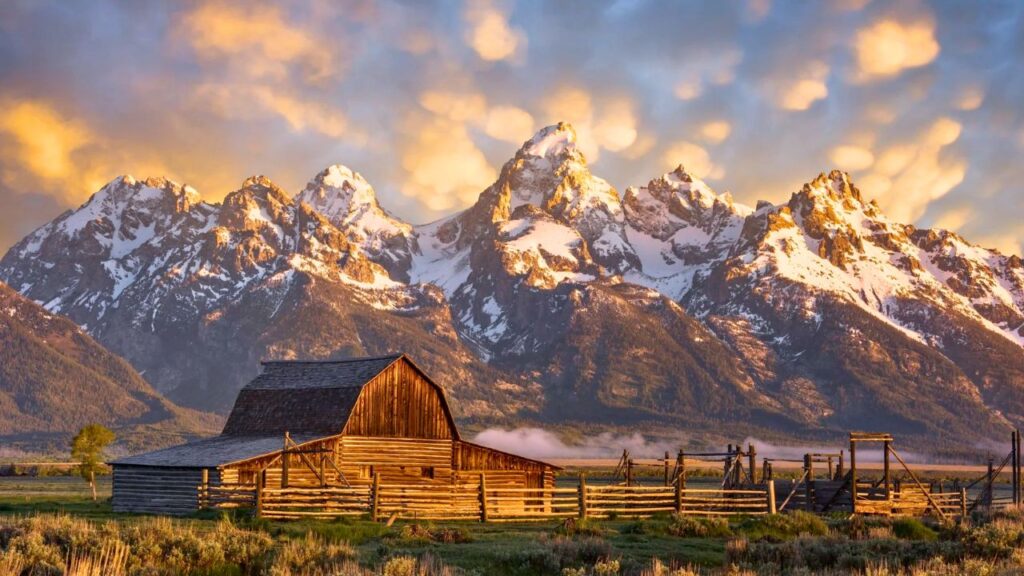
Grand Teton National Park is significant bear habitat, home to both grizzly and black bears. For the safety of visitors and wildlife, it is strongly advised to carry bear spray and be knowledgeable about its proper use. Making noise while hiking and ensuring proper food storage are also essential precautions.
- Best Time to Visit: Summer (warm weather, all facilities open) and Fall (stunning fall colors, wildlife viewing opportunities).
- Things to Do:
- Take a scenic boat ride across Jenny Lake and hike to Inspiration Point: Enjoy stunning views of the Teton Range.
- Photograph the Moulton Barns on Mormon Row: Capture iconic images of historic barns with the majestic Tetons in the background.
- Go wildlife spotting along Oxbow Bend: Look for moose, bison, and other animals along the Snake River.
- Hike to Taggart and Bradley Lakes: Enjoy relatively easy trails to beautiful mountain lakes.
- Drive the scenic Jenny Lake Loop: Experience different perspectives of the lake and surrounding peaks.
- Planning Tips: Entrance fee required (often combined with Yellowstone). Book lodging and activities in advance. Be aware of wildlife and store food properly.
- What to Bring: Layers of clothing, sturdy hiking shoes, binoculars for wildlife viewing, and bear spray (know how to use it).
- Accommodation: Options include lodges and cabins within the park and hotels and vacation rentals in Jackson and Teton Village. Campgrounds are also available (reservations recommended).
9. Olympic National Park
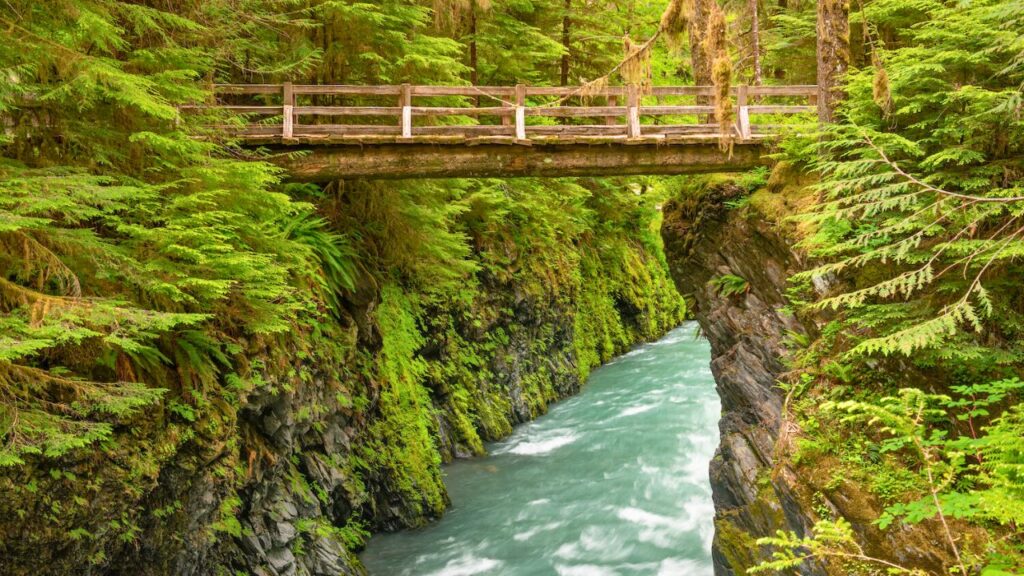
Given the diverse ecosystems within Olympic National Park, visitors should anticipate a wide range of weather conditions. Rainfall is common throughout the year, particularly in the rainforest areas, and it is advisable to be prepared for varying weather even within a single day.
- Best Time to Visit: Summer (all areas generally accessible) and Spring/Fall (fewer crowds, but some higher elevation areas may have snow). Be prepared for rain year-round, especially in the rainforest.
- Things to Do:
- Explore the Hoh Rainforest: Walk among giant moss-draped trees in this temperate rainforest.
- Drive or hike to Hurricane Ridge: Enjoy panoramic views of the Olympic Mountains.
- Discover the rugged coastline at Rialto Beach: Admire the sea stacks and driftwood.
- Hike to Marymere Falls near Lake Quinault: Enjoy a relatively easy walk to a beautiful waterfall.
- Take a scenic drive along the Pacific Coast Highway: Experience the dramatic coastline.
- Planning Tips: Entrance fee required. Check road conditions and trail closures, especially in the mountains. Be prepared for varying weather conditions within the same day due to the park’s diverse ecosystems.
- What to Bring: Waterproof jacket and pants, layers of clothing, sturdy hiking shoes, and insect repellent.
- Accommodation: Options range from lodges and cabins within the park and near Lake Quinault to hotels and vacation rentals in nearby towns like Port Angeles and Forks. Campgrounds are also available (reservations recommended, especially in summer).
10. Glacier National Park
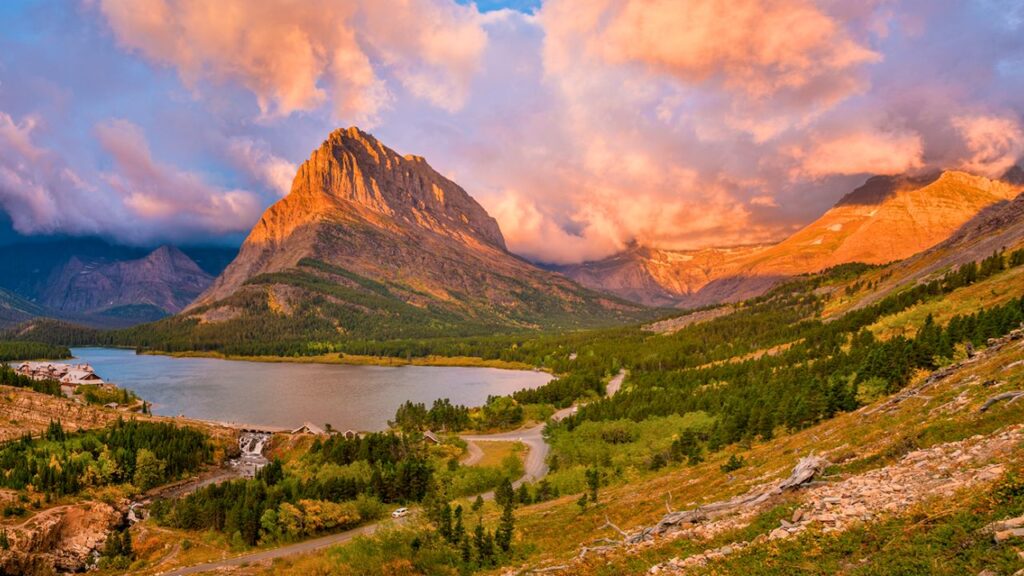
A key consideration for visitors to Glacier National Park is bear safety, as both grizzly and black bears inhabit the area. Carrying bear spray and understanding its use is highly recommended. Additionally, access to the iconic Going-to-the-Sun Road often has restrictions or requires reservations during the peak season, so it’s crucial to check the park’s current status before your visit.
- Best Time to Visit: Summer (all roads and trails are typically open, wildflowers bloom) and early Fall (fewer crowds, beautiful colors). Access to Going-to-the-Sun Road is often limited and may require reservations.
- Things to Do:
- Drive the Going-to-the-Sun Road: Experience one of the most spectacular scenic drives in North America (reservations often required).
- Hike to Hidden Lake Overlook: Enjoy breathtaking views of Hidden Lake and the surrounding peaks.
- Take a boat tour on Lake McDonald: Relax and admire the stunning scenery from the water.
- Hike to Avalanche Lake: See a beautiful lake nestled beneath towering cliffs with cascading waterfalls.
- Explore the Many Glacier area: Discover stunning turquoise lakes and opportunities for wildlife viewing.
- Planning Tips: Entrance fee required. Reservations are often needed to drive the Going-to-the-Sun Road during peak season. Be prepared for potential road closures due to snow or construction. Bear safety is crucial.
- What to Bring: Layers of clothing (including warm layers), rain gear, sturdy hiking shoes, bear spray (know how to use it), and a map.
- Accommodation: Options include historic lodges and cabins within the park and hotels and vacation rentals in gateway towns like Whitefish and Kalispell. Campgrounds are also available (reservations essential).
Conclusion: Plan Your Unforgettable Adventure
Visiting the most popular national parks requires some planning, but the rewards are well worth the effort. By understanding the best times to visit, key activities, and essential planning tips, you can create an unforgettable experience in these magnificent natural landscapes. Remember to check the official National Park Service website for the most up-to-date information on fees, reservations, and any alerts or closures before your trip. Happy exploring!
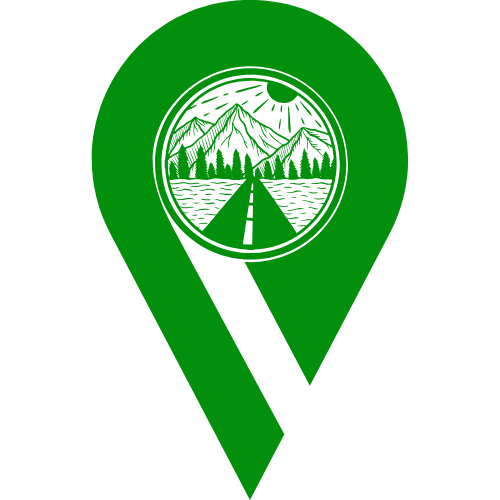
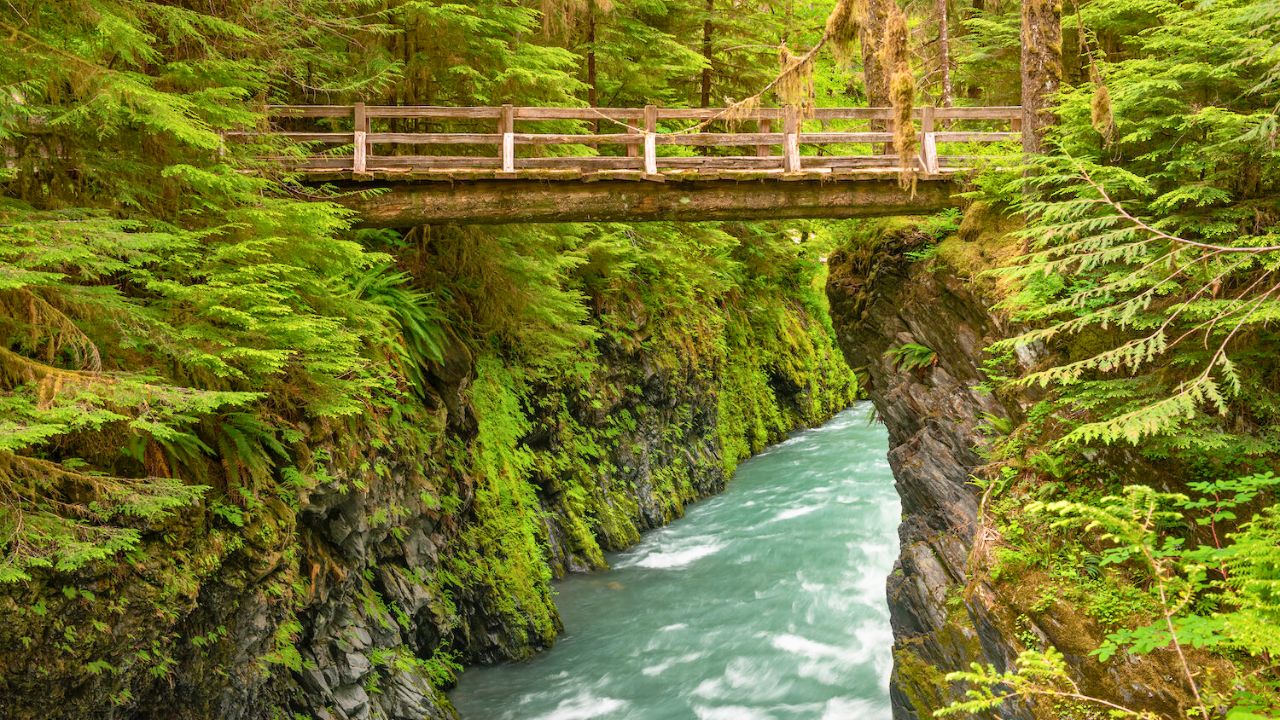
Leave a Reply